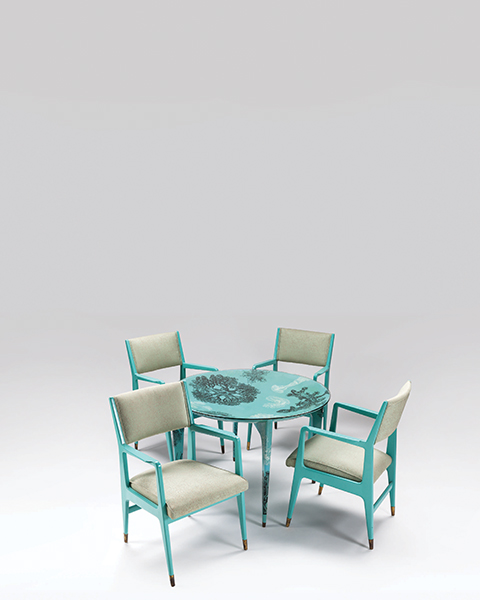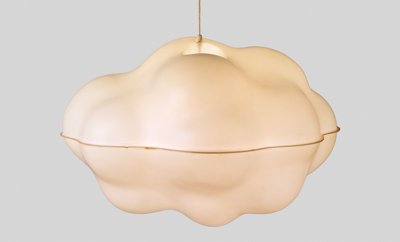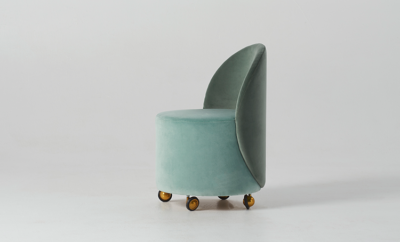A CURATOR ALWAYS HAS A WISH LIST, but some of the greatest acquisitions are those that simply, and quite improbably, materialize. Together, the Italian designers Gio Ponti and Piero Fornasetti created some of the most wonderfully enigmatic furniture of the twentieth century. Ponti brought an architect’s eye for form and construction as well as boomerang angles and dramatic, tapered points. Fornasetti contributed compulsive and ebullient surface decoration, often with whimsical trompe l’oeil that was boldly excessive for the modern era. I never imagined that such a great example of their work would turn up in a residence less than a mile from our museum, but, in 2010, it did.
It began with a request to verify family lore: could a dining suite from the grandparents have come from the SS Andrea Doria, which sank off Nantucket in 1956? Ponti and Fornasetti had been engaged on interiors for that ocean liner (and others), but the claim did not hold water. Scholars have yet to pin down the exact origins of this design; related works offer clues, but not the full story.

MADREPORE TABLE AND FOUR CHAIRS by Gio Ponti (1891–1979) Piero Fornasetti (1913–1988). Painted and lacquered wood with transfer-printed decoration and modern upholstery, c. 1950. Carnegie Museum of Art, Gift of Anne M. Molloy and Henry Posner III In Memory of Ida M. and Henry Posner Sr./ Tom Little Photo
Ponti featured a table of this unusual shape—a concave “tide pool” visible through plate glass—in the dining room he created for Italy at Work: Her Renaissance in Design Today, an exhibition that opened at the Brooklyn Museum in 1950 and toured to multiple American venues. However, Fornasetti’s decoration on the exhibition model consisted of fish, seahorses, and crayfish rather than the coral seen here. The same year, he deployed identical coral transfers on a fireplace for a Milan apartment. Two tables and eight chairs are known to exist today: the Carnegie’s set and one auctioned in 2005, 2014, and 2017. Curiously, the eight chairs are marked with roman numerals ranging from XII to XXI, suggesting the existence of a larger set.
Rachel Delphia
Alan G. and Jane A. Lehman Curator of Decorative Arts and Design Carnegie Museum of Art, Pittsburgh
 MADREPORE TABLE AND FOUR CHAIRS by Gio Ponti (1891–1979) Piero Fornasetti (1913–1988). Painted and lacquered wood with transfer-printed decoration and modern upholstery, c. 1950.
MADREPORE TABLE AND FOUR CHAIRS by Gio Ponti (1891–1979) Piero Fornasetti (1913–1988). Painted and lacquered wood with transfer-printed decoration and modern upholstery, c. 1950.
 MADREPORE TABLE AND FOUR CHAIRS by Gio Ponti (1891–1979) Piero Fornasetti (1913–1988). Painted and lacquered wood with transfer-printed decoration and modern upholstery, c. 1950.
MADREPORE TABLE AND FOUR CHAIRS by Gio Ponti (1891–1979) Piero Fornasetti (1913–1988). Painted and lacquered wood with transfer-printed decoration and modern upholstery, c. 1950.













